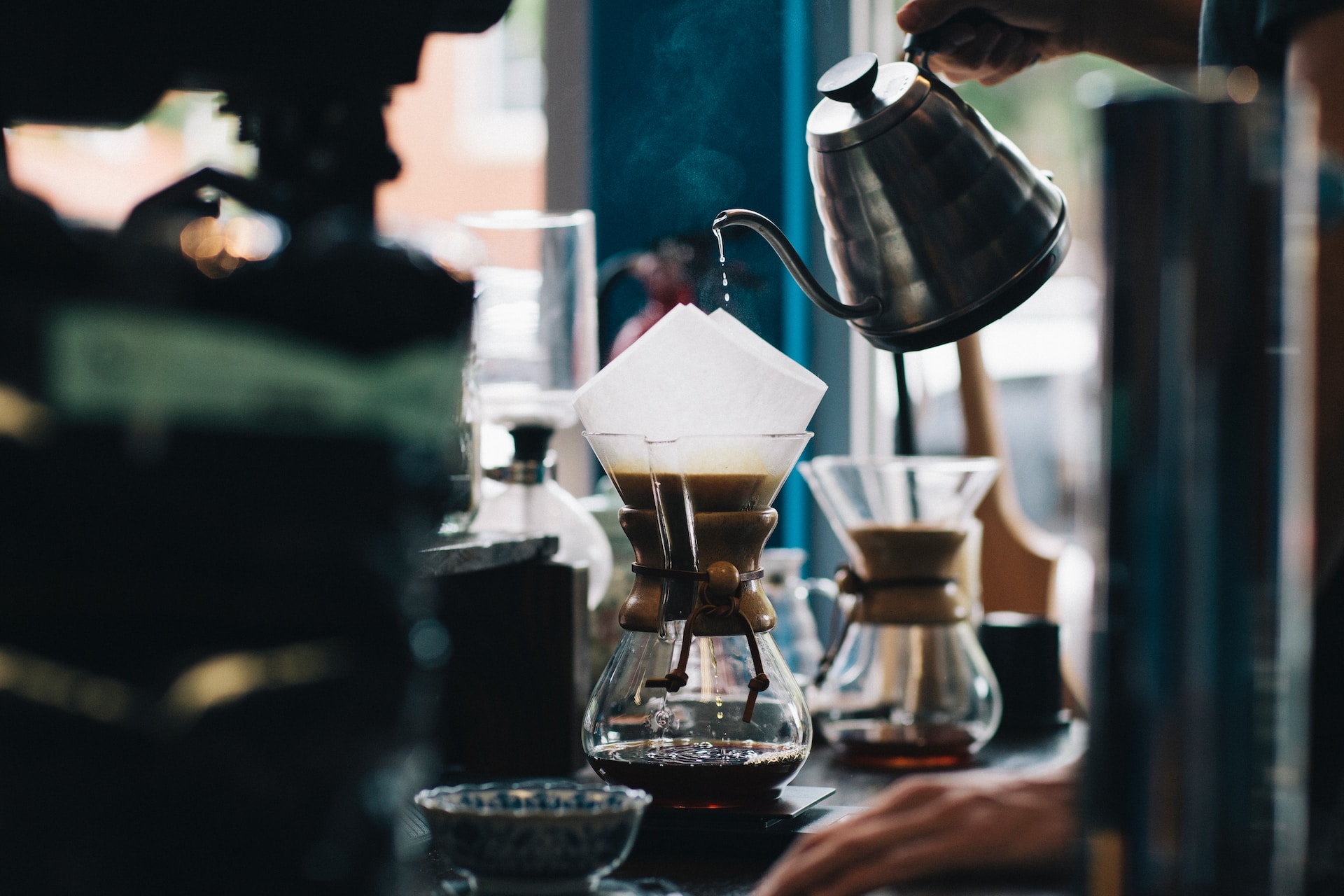If you’re a fan of cold brew coffee, the likelihood is that you’re aware of its distinct flavor and texture. You might even prize it for the seemingly stronger caffeine kick it provides, compared to traditional brews. But have you ever stopped to consider exactly how much caffeine cold brew coffee contains or what’s your cold brew caffeine content? Knowing the level of caffeine in your cup can help gauge your consumption. Allow us to break down the details for you.
Understanding the caffeine content in cold brew coffee not only contributes to your coffee knowledge but can also help you manage your caffeine intake more effectively.
Let’s first explore what influences the caffeine content in cold brew coffee. There are several factors to consider: the coffee-to-water ratio, brewing time, and the type of coffee used. More coffee and longer brewing times will generally equate to higher caffeine content. Similarly, using a coffee variety that naturally has a high caffeine content will result in a stronger brew.
Here’s a quick comparison of caffeine content in cold brew versus other types of coffee:
- Espresso: About 63 mg of caffeine per ounce
- Brewed coffee: Roughly 12-16 mg of caffeine per ounce
- Cold brew coffee: Approximately 15-25 mg of caffeine per ounce, depending on factors like brew time and coffee-to-water ratio
It’s essential to understand these comparisons to effectively monitor your caffeine intake. Continue reading to learn more about the effects of caffeine and how you can enjoy your cold brew in a healthier way.
Table of Contents
In the end, it’s not just about how good your coffee tastes, but also about how it impacts your lifestyle and well-being.
How is a cold brew made?
To understand the caffeine concentration in cold brew coffee, it’s important to know how it’s actually made.
The method involves immersing coarsely ground coffee beans in room temperature or cold water for an extended period, typically 12-24 hours. This method results in a coffee concentrate, which you then dilute with cold water or milk according to your preference.

Your cold brew journey kicks off with a crucial decision: choosing your coffee beans. Whether you prefer a light, medium, or dark roast is up to you.
Next, grind the beans coarsely to ensure optimal water exposure and balanced extraction—too fine, and your brew may end up over-extracted and bitter. Use a coffee grinder to do this, or ask your local coffee shop to grind them for you.
Now, let’s delve into the brewing process. You’ll add your ground coffee into a mason jar or French press at a 1:8 coffee-to-water ratio—this can be adjusted to personal preference.
Then, pour cold water over the grounds, ensuring that all of them are saturated. Stir the mixture thoroughly so that the coffee can evenly steep in the water.
- Steeping Process: After stirring, the time for patience begins. Cover your container and let the mixture ‘sleep’ for about 12-24 hours at room temperature. This steeping time allows for the cold water to slowly extract flavors from the coffee grounds, resulting in a rich, smooth brew.
- Filtering Process: Once the steeping process is completed, it’s time to filter your brew! Pour the mixture through a fine-mesh sieve, coffee filter, or cheesecloth to separate the liquid from the ground. Depending your on preferences, you may wish to filter it a second time for a cleaner cup.
The resultant concoction is your concentrated cold-brew coffee! It can be served over ice, diluted with water or milk, or even warmed up if you prefer.
Remember, due to its concentrated nature, cold brew usually contains more caffeine than other coffee types—a key point to bear in mind as you enjoy your homemade brew each morning or afternoon.
Understanding the Caffeine Content in Cold Brew Coffee
Whether you’re new to cold brew, or not, understanding its caffeine content is crucial, as it can directly influence your energy levels, mood, and overall health.
Cold brew coffee, intriguing with its uniquely bold flavor and less acidic nature, often contains a significantly higher amount of caffeine in comparison to its hot brewed counterparts.
The caffeine content in cold brew coffee can range between 100mg to 200mg per 8 oz (240ml) serving on average.
This is significantly higher when compared with regular drip coffee or espresso, which typically contain about 95mg of caffeine for the same serving size.
However, bear in mind, that this can vary based on numerous factors including the type and grind of the coffee beans, duration of the steeping process, and the water-coffee ratio.
| Type of Coffee | Average Caffeine Content per 8 oz (240ml) |
|---|---|
| Regular Drip Coffee | 95mg |
| Cold Brew Coffee | 100mg – 200mg |
In terms of caffeine punch per serving, cold brew surely seems to have an edge.
However, the consequences of consuming high-caffeine drinks include increased heart rate, nervousness, and insomnia, making it essential to monitor your intake.
Read: Common Cold Brew Problems & How to Solve Them
Cold Brew vs. Other Coffee Types: A Caffeine Content Comparison
Now, let’s take a look at how cold brew caffeine content stacks up against other popular types of coffee. We’ll use a common measure, milligrams of caffeine per fluid ounce, to make a fair comparison.
Below is a table laying out the caffeine content in various coffee types:
| Coffee Type | Caffeine Content (mg/fl oz) |
|---|---|
| Espresso | 63 |
| Drip Coffee | 12-16 |
| Instant Coffee | 7-8 |
| Decaf Coffee | 0.4-3.8 |
| French Press | 13-18 |
| Cold Brew Coffee | 15-25 |
As you can see, cold brew coffee carries a relatively high caffeine content per fluid ounce, even when compared with much stronger types of coffee, like the French press. However, it’s also important to note that the overall caffeine content can vary significantly based on specific brewing methods and ratios.
For example, the caffeine content in your cold brew can spike if you steep your coffee grounds for an extended period or use a higher ratio of coffee to water. We’ll delve into these factors and their influence on caffeine content later.
Before moving on, let’s not forget that the enjoyment of coffee goes beyond its caffeine content. The specific flavor profile and brewing process of cold brew coffee might be just what you’re looking for, regardless of its caffeine content.
So, it’s essential not to lose sight of what makes coffee enjoyable for you!
Factors Influencing the Caffeine Content in Cold Brew Coffee
There’s more to cold brew caffeine content than simply the brewing process itself. Several factors would work together in dictating and modifying that final caffeine punch your cold brew delivers. Understand that each of these variables may alter the caffeine content noticeably.
- Brew Time: The length of time you allow your coffee to brew plays a pivotal role in determining caffeine content. Cold brew coffee typically steeps for 12 to 24 hours. The longer the steeping process, the stronger — and more caffeinated — the result can be.
- Coffee Roast: Contrary to common belief, lighter roasts often have more caffeine than darker ones. Why? During a longer roast (like for dark roasts), more caffeine is cooked out of the beans. For a higher caffeine level, consider using a light or medium roast for your cold brew preparations.
- Water to Coffee Ratio: Water dilutes the caffeine in coffee. So logically, adding more water would decrease the caffeine content in your cold brew. Looking for a big caffeine burst? Stick with a stronger brew by minimizing the amount of water in your coffee-to-water ratio.
- Type of Coffee Beans: Just as wines are diverse depending on the type of grape and where it’s grown, so too does the variety of coffee beans impact its caffeine content. Arabica beans are known for their superior taste, but they actually contain less caffeine than the lesser-known Robusta variety.
- Grind Size: Lastly, the grind size of your coffee beans can affect your caffeine intake. As a rule, the finer the coffee grounds, the more surface area available to extract caffeine during brewing, potentially leading to a higher caffeine content. However, note that overly fine grounds might over-extract, leading to bitter flavors.


Leave a Reply